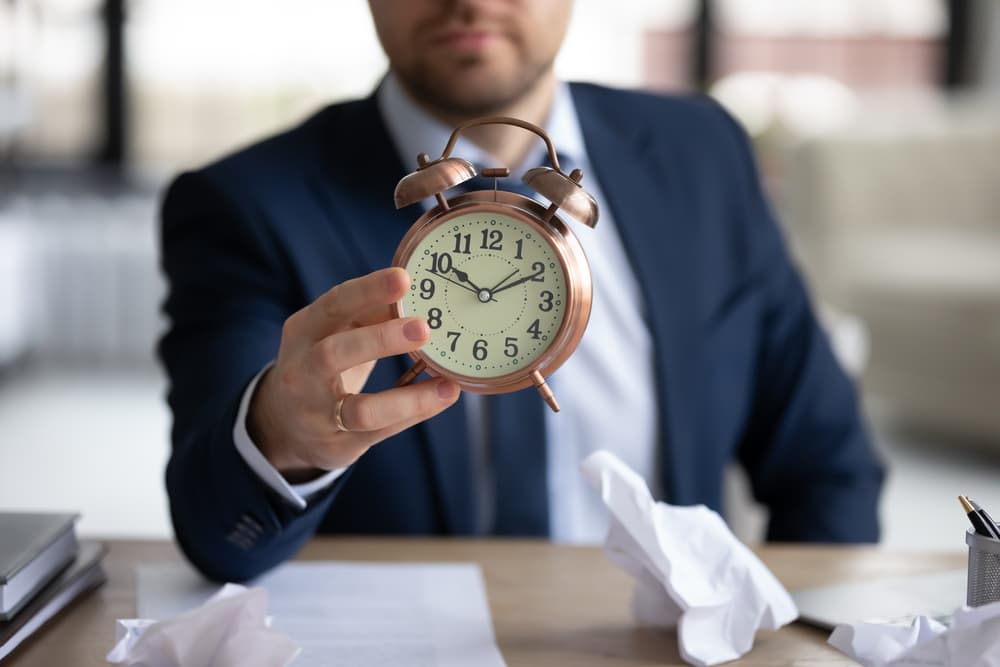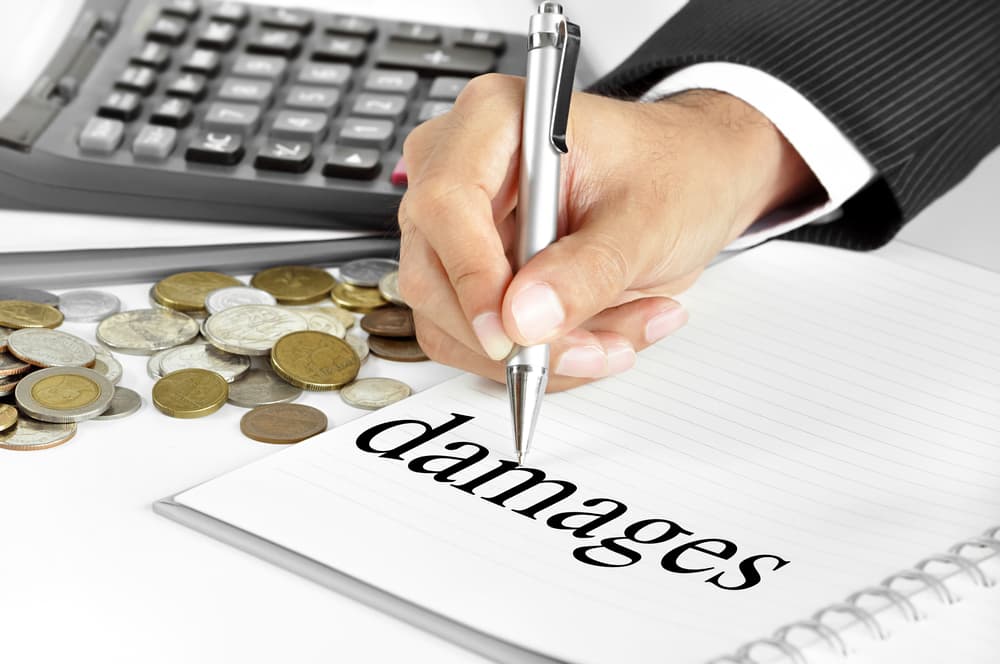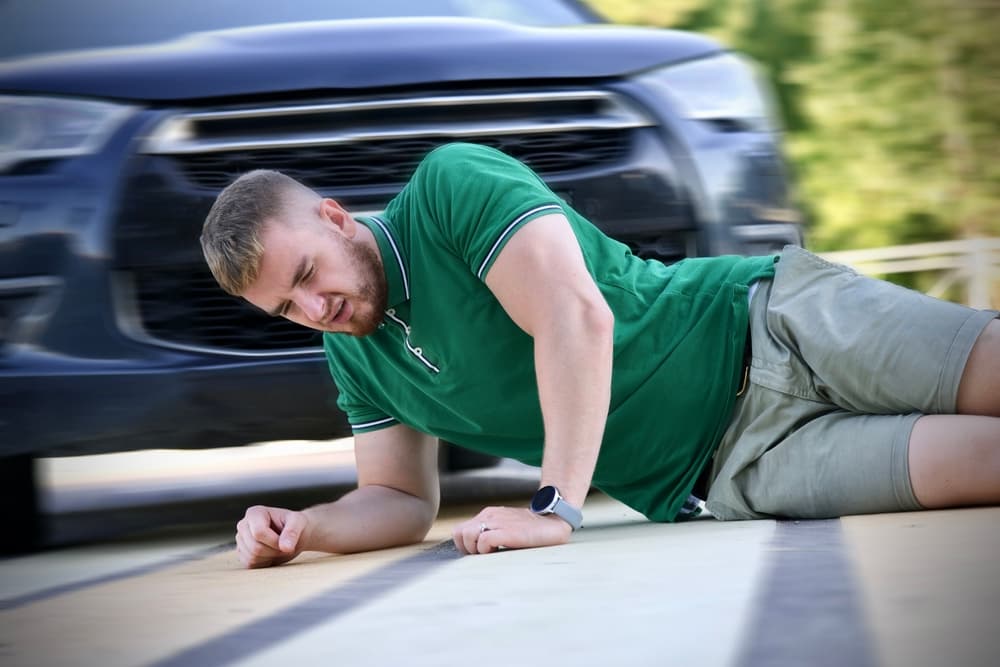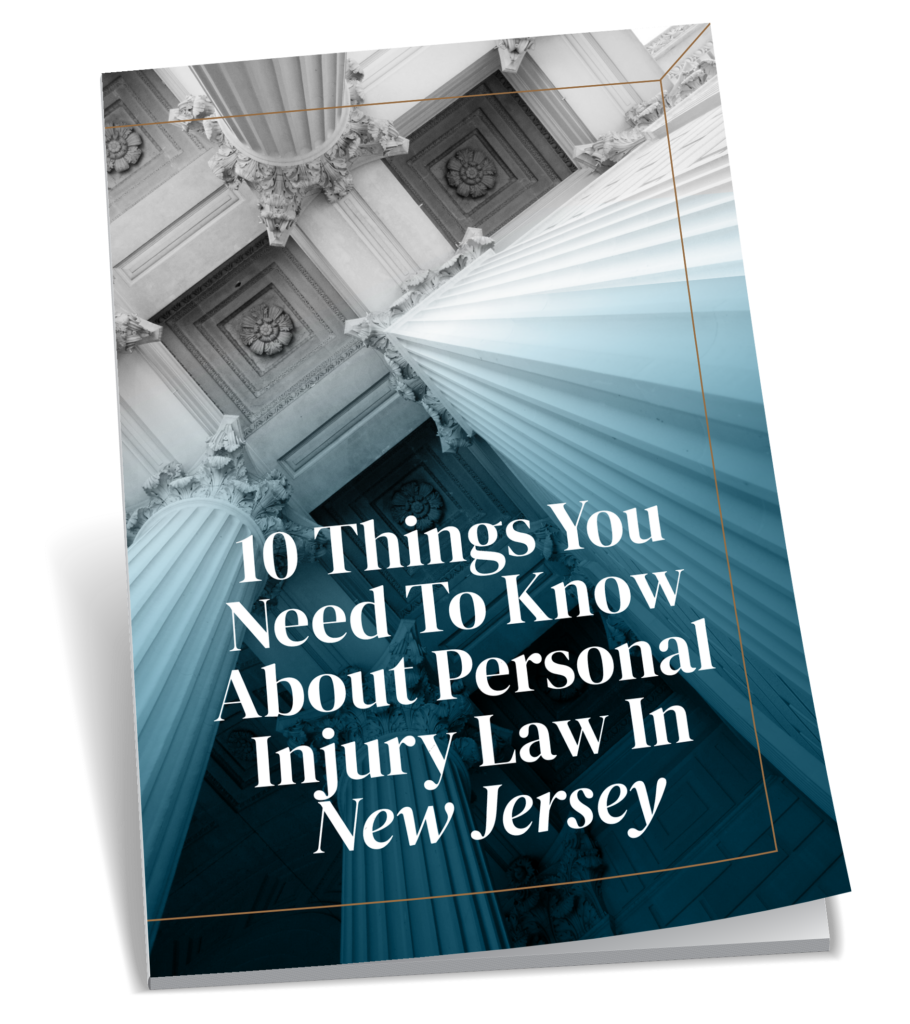While strolling down a sidewalk in Hackensack, it may be tempting to feel secure, but walking alongside a busy road poses more risks than one might realize. Pedestrian accidents are, unfortunately, quite common. Nationwide, a staggering 70,000 pedestrians suffer injuries in car crashes each year, with nearly 5,000 of them resulting in fatalities.
If you find yourself in this unfortunate situation, successfully initiating your claim is crucial before focusing solely on the healing process (for yourself or a loved one). Your claim is the key to obtaining the compensation necessary to cover medical expenses and meet financial obligations in the coming months.
Considering the potential inability to return to work for a significant period, the costs associated with your recent crash can be substantial. In this challenging time, a pedestrian accident attorney in Hackensack can pursue the compensation essential for peace of mind during your recovery.
Schedule a Free Initial Consultation Today!
Pedestrian Accident Statistics
According to the Governors Highway Safety Association annual report, pedestrian fatalities rose 19 percent between 2019 and 2022 across the U.S. In just one year, New Jersey had 2.05 pedestrian accident fatalities per 100,000 residents.
The National Highway Transportation Safety Administration reports that most pedestrian traffic deaths occurred:
- In urban areas (84 percent)
- On the open road (77 percent) versus intersections (23 percent)
- During dark conditions with or without artificial lighting (74 percent)
The most pedestrian deaths occur on Fridays (1,248), closely followed by Saturdays (1,220), and the majority of them occur after the sun has gone down.
High-Risk Pedestrian Locations in Hackensack
While walking offers numerous benefits, such as exercise, mental well-being, cost-effectiveness, and environmental friendliness, it comes with inherent risks, particularly in certain areas.
New Jersey has a higher pedestrian accident rate than many other U.S. states, and within Hackensack, specific locations pose heightened dangers for pedestrians.
Some of these areas include:
- Essex Street and Prospect
- Polifly Road and Essex Street
- South Summit Avenue and West Pleasantview Avenue
- Summit Avenue and Thompson Street
Motorists and pedestrians must exercise increased caution in these areas to mitigate the risk of accidents and enhance overall safety.
Who Bears Responsibility for Your Pedestrian Accident Injuries?
Typically, in pedestrian accidents, the motorist who collided with the pedestrian is at fault for the resulting injuries and damages. However, alternative or additional parties can be liable aside from the driver.
For instance, consider a scenario where the driver who struck you conscientiously stopped at the crosswalk for you. While you were crossing, their vehicle was impacted by a speeding or intoxicated driver, propelling their car into you.
Another possibility is that the government entity tasked with maintaining crosswalks, signs, and lights neglected their duties, making them accountable for your injuries.
Occasionally, the driver's vehicle manufacturer may also be culpable for producing a defective part, such as faulty brakes, in the case of the driver who hit you.
Despite the apparent liability in your accident, it's highly advisable to have an experienced pedestrian accident attorney assess your case. There may be instances where multiple parties share fault for your injuries, and your attorney can leverage this information to optimize your compensation.
Understanding Negligence
Fundamentally, negligence involves failing to act in a manner consistent with how a reasonable person should behave in similar circumstances. Negligence can result from either action or inaction.
Instances of negligence contributing to pedestrian accidents include:
- Speeding
- Driving while distracted
- Operating a vehicle while drowsy or fatigued
- Driving under the influence of drugs or alcohol
- Neglecting vehicle maintenance
- Producing faulty vehicle parts or vehicles
- Failing to repair, replace, or maintain traffic signals, signs, or repaint sidewalks
Furthermore, to substantiate your injury claim, your pedestrian accident attorney must prove the four elements of negligence:
- Duty of Care: The other party was obligated to act in a specific way, such as a driver being vigilant for pedestrians in a crosswalk.
- Breach of Duty: The other party failed their obligation or breached their duty, for instance, a driver speeding through a school zone.
- Proximate Cause: The other party's breach of duty directly caused your injuries; you would have safely crossed the street without their actions.
- Damages: Your injuries led to compensable damages, including medical expenses, loss of society, pain and suffering, mental anguish, and scarring or disfigurement.
A successful pedestrian accident case based on negligence necessitates establishing each point. Failure to do so may hinder your pursuit of compensation for your injuries.
What is the Timeframe for Filing a Pedestrian Accident Claim?

Following a pedestrian accident, there exists a restricted window of time within which you must take action to pursue your legal recourse.
Typically, under the statute of limitations specific to each state, accident victims have only one to four years from the date of the incident to initiate a claim.
In New Jersey, the deadline is two years from the accident. It's also important to note that different statutes of limitations may apply in cases involving injured children or claims against government entities.
Failure to file your case within the stipulated timeframe renders you ineligible to seek compensation for your accident claim.
Rather than determining the applicable statute for your unique circumstances yourself, consult a pedestrian accident lawyer promptly. Their skill will ensure a precise understanding of your case's applicable statute of limitations, and they will take the necessary steps to file your claim within the specified timeframe.
Common Factors Contributing to Pedestrian Accidents
The majority of pedestrian accidents are attributable to driver negligence, with prevalent causes in New Jersey including the following:
Distracted Drivers
Drivers engaged in texting or talking on cell phones not only jeopardize other motorists but also pose a significant risk to pedestrians. The prevalence of distractions, such as cell phones, apps, advanced sound systems, passengers, children, or pets, can divert a driver's attention from the road.
Responding to these distractions by taking eyes off the road, hands off the wheel, or thoughts away from driving significantly elevates the risk of an accident.
A momentary lapse in attention, such as looking down at a phone, can lead to severe consequences. Moreover, distracted driving is not just negligent; it is often illegal, with many states enforcing hands-free laws.
Impaired Drivers
Driving under the influence of alcohol or drugs is universally recognized as hazardous. This risk increases near pedestrians, with impaired drivers frequently disregarding traffic signals or making unsafe turns into groups of pedestrians.
DUI laws across states make it illegal to operate a motor vehicle with a certain blood alcohol content (BAC) level or under the influence of substances.
Impatient Drivers
Despite pedestrians generally having the right of way according to state laws, impatient drivers may neglect this, leading to accidents. Instances include drivers failing to yield to pedestrians in crosswalks or attempting to maneuver around pedestrians.
Recklessness
Reckless driving, marked by disregarding traffic laws and pedestrian safety, is a leading cause of accidents. Speeding, weaving through traffic, ignoring signals, and making illegal maneuvers can result in hazardous situations for pedestrians—sadly, many victims never see the vehicle coming.
Bad Weather
Adverse weather conditions heighten the risk for pedestrians, as reduced visibility and slippery roads can contribute to accidents. Drivers must exercise increased caution during such conditions. For example, slowing their speed under the speed limit when the roads are slick and wet.
Road Construction
Pedestrians forced to navigate construction areas may encounter unexpected risks, as drivers may not anticipate their presence. Areas of road construction can create a lot of uncertainty and confusion for both motorists and those on foot.
Vehicles Making Left Turns
Pedestrians are at risk when drivers making left turns focus on busy intersections, potentially overlooking pedestrians in crosswalks.
Multi-Lane/Arterial Roads
Areas with multiple lanes and arterial roads pose risks, as drivers often concentrate on other vehicles rather than pedestrians.
Faulty Motor Vehicles
Defective vehicles, such as those with faulty tires or brakes, can lead to accidents. In such cases, the manufacturer or parts manufacturer may be held liable.
Hit-and-Run Accidents
Pedestrian accidents may escalate into hit-and-run incidents, especially if the pedestrian sustains severe injuries. State laws mandate that drivers involved in personal injury accidents with pedestrians remain at the scene. If they fail to do so, they can face severe criminal charges.
Regardless of perceived causes, seeking the review of a reputable pedestrian accident lawyer is imperative. Legal professionals can assess the driver's negligence and determine if compensation is warranted for the injuries sustained.
Potential Damages in a Pedestrian Accident Claim

After suffering injuries in a pedestrian accident, you may pursue damages through an injury claim.
Damages generally refer to the tangible costs associated with an injury, translating into monetary compensation for the losses, inconveniences, and challenges the injured party faces post-accident. The types and amounts of recoverable damages depend on the injuries' severity and extent.
Compensatory Damages
There are two types of compensatory damages: economic (special) and non-economic (general).
Economic damages pertain to actual monetary losses arising from the accident or injury, and they include:
- Past and future medical expenses
- Domestic services like childcare and housekeeping
- Medical equipment
- Prescription costs
- Rehabilitation and therapy expenses
- Lost income and earnings
- Damaged or destroyed property, such as a vehicle
- Transportation and travel costs
- Legal fees and attorney expenses
- Given their measurable nature, economic damages are relatively straightforward to value and calculate, each with a predetermined value.
Non-economic damages, however, pose a greater challenge in assessment due to their subjective nature.
These damages include:
- Physical pain and suffering
- Emotional distress
- Mental anguish
- Psychological trauma
- Anxiety or depression
- Loss of quality of life
- Loss of enjoyment of life
- Loss of consortium
- Humiliation
The valuation of non-economic damages is typically contingent on the severity of the injuries and the amount awarded in economic damages. A proficient pedestrian accident attorney can analyze these damages to determine the potential worth of your case and diligently work to substantiate non-economic damages despite their subjective nature.
Punitive Damages
While all successful pedestrian accident injury cases result in compensatory damages, only a fraction involve punitive damages. This is because they are only potentially applicable in cases that proceed to trial.
Unlike compensatory damages, which compensate victims for losses, punitive damages serve as a means to penalize the at-fault party for their egregious conduct.
Courts may award punitive damages only if the other party demonstrates:
- Conscious disregard or indifference to the life, safety, or rights of others
- Prior knowledge that their conduct was wrongful and can result in injury
For instance, the court may award punitive damages to the victim in cases of:
- Hit and runs
- Drunk driving events
- Repeat offenses
Incorporating both compensatory and, if applicable, punitive damages in your pedestrian accident claim requires the knowledge of a seasoned attorney who can meticulously assess the nuances of your case and navigate the legal complexities to secure just compensation.
Should You Communicate with the Insurance Company of the At-Fault Party?
In general, engaging in conversation with the insurance company of the party at fault tends to yield no positive outcomes for the injured party. While you should report the accident and begin your claim, your lawyer should handle everything.
A claims adjuster from the opposing party's insurance company may reach out to you shortly after you report the accident. They often project a friendly and seemingly genuine concern for your well-being.
Regrettably, this is a strategic maneuver on their part. They aim to establish trust, hoping you may inadvertently say something detrimental to your claim. To mitigate risks, it's advisable to decline to speak with them. Inform them that you have legal representation overseeing your case, and any communication should be directed to your attorney.
If you must engage with the insurance company or their legal representatives in the future, your attorney will be present to assist and guide you through the process. You never face such interactions alone once you hire a pedestrian accident lawyer.
When to Reach Out to a Seasoned Pedestrian Accident Lawyer

Suppose you or a loved one has recently experienced a pedestrian accident resulting in injuries. In that case, safeguard your legal rights by promptly contacting a seasoned pedestrian accident attorney. This step helps to preserve crucial evidence supporting your claim, preventing its loss or destruction.
Additionally, it serves as a protective measure against insurance companies aiming to minimize compensation. Your Hackensack personal injury lawyer will explain your legal options and formulate a strategic plan tailored to your circumstances. Secure legal representation as soon as possible after suffering injuries in a pedestrian accident.


